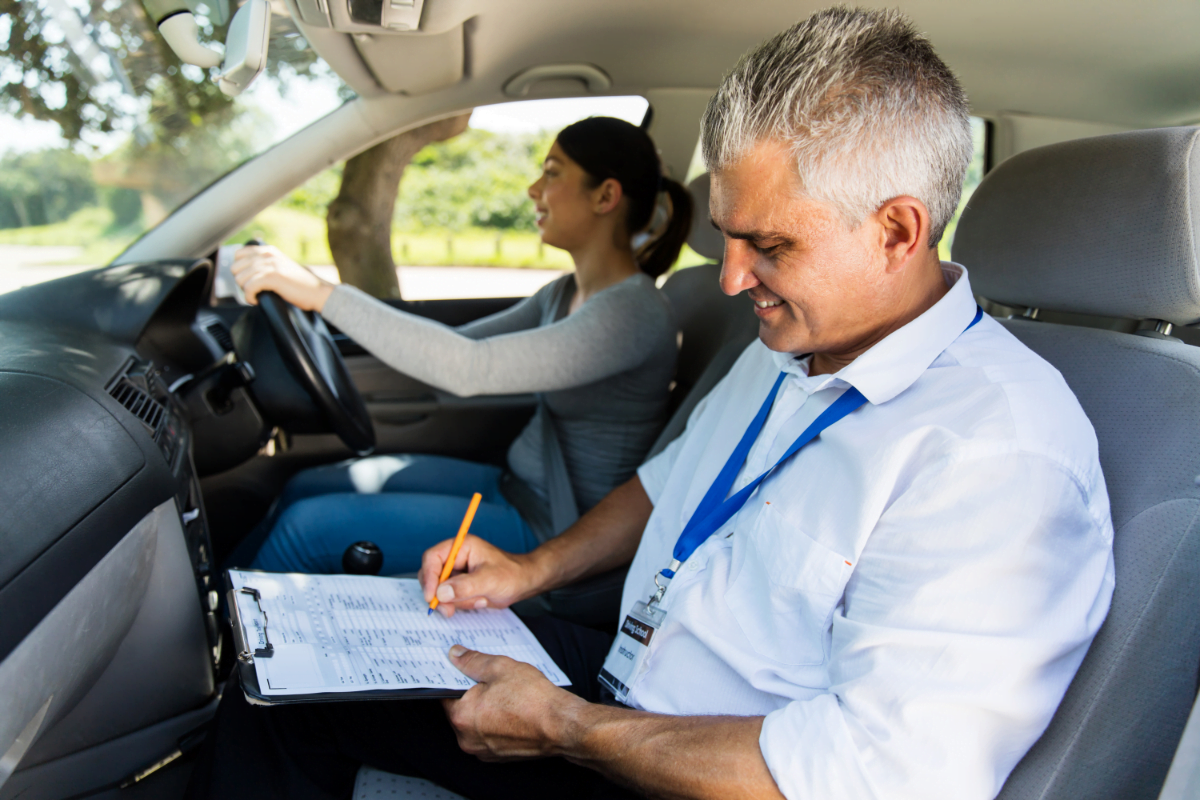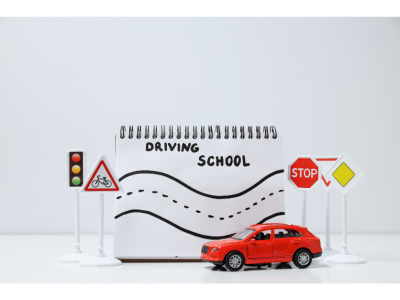Your Ultimate Guide: What Happens in a UK Driving Test?
Have you ever felt the heart-pounding, adrenaline-rushing excitement of preparing for your first driving test? If so, then this piece is just for you.
The clock ticks loudly in the silent room. Your palms are sweaty on the steering wheel as you mentally run through all traffic rules and maneuvers. It’s like being at a crossroads with an intimidating signpost that reads ‘Independence’ one way and ‘Retake’ another.
In essence, a driving test is more than just about controlling a motor vehicle safely—it’s about showcasing decision-making skills under pressure while respecting others sharing the road space.

We’ll navigate together through regular traffic situations to master tricky parallel parking, helping ease those nerves and arm you with confidence when D-Day arrives. Buckle up because it’s time to take control of your journey towards independent driving!
Understanding the UK Driving Test
The UK driving test comprehensively evaluates your ability to operate a motor vehicle safely. It’s more than obeying traffic signs and signals or staying within posted speed limits.
You’ll be assessed on various elements, including how well you handle regular traffic situations like lane changes and parking. You must demonstrate an understanding of correct lane usage, proper shoulder checks for blind spots before making any lane change, and ensure brake lights and turn signals function correctly.
Navigating Test Day Nerves
Anxiety can make even the best drivers fumble during their driving test. But remember – it’s normal to feel nervous.
A good strategy is taking deep breaths while visualizing yourself driving confidently through different traffic conditions. Imagine dealing with weather conditions that may affect visibility (like activating windshield wipers in the rain) or poor weather affecting road grip (like reducing speed when roads are icy).
The Importance of Timeliness and Location
To avoid sudden rushes that could further increase nerves, ensure you arrive at the correct location for your test center early enough on the day of your driving exam.
Your examiner will expect punctuality – it also shows respect for their time. Not only does arriving late cause stress, but it could lead to rescheduling if there isn’t enough daylight left for testing purposes after arrival delay.
Diving into The Five Sections Of The Driving Test
In order not just survive but also ace this all-important examination requires understanding its structure comprehensively – broken down into five key sections: an eyesight check, ‘show me,’ and ‘tell me’ questions about car safety features; general assessment around controlling vehicle safety among other cars/pedestrians/cyclists, etc.; reverse maneuver demonstration (such as parallel parking); finally, the 20-minute independent driving part where examiner gives instructions on a route.
Eyesight Test Requirements
One of the first test elements you’ll encounter is an eyesight check. You need to read a number plate from a distance of 20 meters – so don’t forget your glasses if you need them.
If you stumble at this first hurdle, don’t worry. If you have difficulty with the initial challenge, don’t despair; there are numerous further stages.
Diving into the Five Sections of the Driving Test
The UK driving exam is split into five distinct sections, each made to evaluate a different element of your capacity to drive a car safely. Let’s delve deeper into these sections.
Eyesight Test Requirements
An eyesight test is conducted before you even get behind the wheel for the driving portion. You’ll need to read a number plate from a distance of 20 meters. If glasses or contact lenses help you meet this requirement, that’s perfectly fine – but remember always to wear them when driving.
Why such a focus on vision? It’s simple: Good eyesight ensures safe driving by letting us quickly spot potential hazards, understand traffic signs and signals, and adjust according to weather conditions.
‘Show Me’, ‘Tell Me’ Questions
This section involves safety check questions related to car maintenance and operations – commonly known as ‘show me’ and ‘tell me’ questions. For instance, we demonstrate how windshield wipers work or explain what checks would be appropriate before setting off on a journey.
These are not just random queries; they’re designed with real-world applications in mind because handling minor technical issues can ensure vehicle safety during regular traffic situations or poor weather conditions.
Familiarizing Yourself with Your Vehicle
Aceting this part of the driving test effectively requires getting familiar with your car – its turn signal location, parking brake operation method, and where the emergency flasher button is located- all play crucial roles here. You wouldn’t want something as basic as failing at finding the correct lane change signal to make you lose points.
A Peek Into the General Driving Ability Section
The third section, general driving ability, is where you showcase your understanding of speed limits and how to operate a vehicle safely. It involves everyday scenarios like lane changes or following posted speed limits while demonstrating more complex skills such as responding correctly to traffic conditions.
These are crucial skills for a safe drive. Understanding which lane to use when turning at junctions, regularly checking your blind spots during lane changes, and adjusting how you drive based on the weather conditions are vital in maintaining road safety.
Enhancing Your General Driving Ability
Acquiring top-notch driving skills is essential to achieving your UK driving test. Applying road rules correctly is key to driving safely.
Maintaining a Safe Distance
Safety on the road often starts with keeping a safe distance from other vehicles. Whether cruising down highways or navigating through regular traffic, always ensure there’s enough space between your vehicle and others.
A handy rule of thumb? The two-second rule. This means staying at least two seconds behind any vehicle in front of you during normal weather conditions. But if you are dealing with poor weather like heavy rain or fog, double this gap for extra safety.
The Art of Smooth Acceleration
 To pass your driving test, mastering smooth acceleration is crucial. Have you ever been in a car where every push on the gas pedal felt jerky? That doesn’t exactly scream ‘safe driver.’
To pass your driving test, mastering smooth acceleration is crucial. Have you ever been in a car where every push on the gas pedal felt jerky? That doesn’t exactly scream ‘safe driver.’
Becoming adept at gradual speeding up lets you maintain better control over your motor vehicle while ensuring safer transitions into different speed limits as required by traffic signs and signals. Remember that rapid acceleration can be seen as reckless behavior by an accompanying driver (read: examiner), so avoid sudden surges unless necessary.
- Pull Over: Learning to pull over smoothly without disrupting other drivers shows good command over your car and respect for fellow motorists.
- Hill Start: Starting from stationary uphill requires finesse – balance clutch control and accelerator input to prevent rolling back.
- Move Off: Similarly, moving off should be done smoothly – no abrupt lunges forward.
Remember, the goal isn’t to impress your examiner with how fast you can go. It’s about demonstrating that you understand and respect speed limits, can anticipate changes in traffic conditions (like a sudden red light or pedestrian crossing), and respond appropriately.
Tackling ‘Show Me’ Questions
‘Show me’ questions are a critical part of the driving test. They’re designed to assess your overall ability and knowledge.
Mastering Reversing Maneuvers
Regarding driving tests, reversing maneuvers can feel like a daunting challenge. But with the right guidance and plenty of practice, you can master them quickly.
Perfecting Parallel Parking
Parallel parking might make your palms sweat, but remember that it’s just about control and spatial awareness. To start, always signal your intent early using functioning turn signals – crucial for safe driving.
Aligning your vehicle with the one in front before beginning parallel parking is essential, so use an imaginary line from their license plate to yours as a guide. It helps to consider an imaginary line running from their license plates through yours as a guide.
Your rear-view mirror becomes important because maintaining visibility is key when executing reversing maneuvers such as parallel park or bay parking. Check it frequently during the procedure, and look over your shoulder regularly for potential hazards.
Pulling Up on The Right Side
Pulling up on the right side requires precise judgment, too. Once again, begin by signaling appropriately using functional turn signals, then carefully pull across into position, ensuring no traffic situations are impeding you.
You must obey posted speed limits while performing this maneuver; slow down gradually rather than braking abruptly, which may cause other drivers inconvenience or confusion, especially in poor weather conditions where brake lights could reflect excessively off wet surfaces, causing momentary blindness known as the ‘dazzle’ effect.
- Pull up safely without obstructing driveways or entrances,
- Come to a complete stop by applying the parking brake securely,
- Flick on your emergency flashers to alert other drivers of your stationary status.
Bay Parking: Forward and Reverse
Whether reverse or forward bay parking, the approach remains more or less the same. It’s all about accuracy and control, just like parallel parking.
To pull this off smoothly without hitting any vehicles nearby or crossing into another bay is a test of precision. Therefore, you must steer smoothly while continuously checking mirrors for blind spots.
- Make your way towards the space.
Independent Driving and Navigation Skills
The UK driving test puts a great emphasis on independent driving. This section tests your ability to drive safely while making decisions independently, whether you’re following a satellite nav or traffic signs.
Understanding Independent Driving
In the independent driving portion of the test, you’ll be asked to follow directions from a satellite or traffic signs for about 20 minutes. The purpose is to see if you can get from point A to B and how well you observe speed limits and adapt according to changing weather conditions. You must demonstrate an understanding of road rules like lane changes and using turn signals properly.
Maintaining control over your vehicle safely is also paramount during this part of the test. So remember: mirror checks before any maneuver is crucial.
Navigating with Sat Navs vs Traffic Signs
Sat nav navigation will be used in four out of five tests; however, don’t rely solely on it because drivers will need knowledge about traffic sign interpretation once every five times.
If guided by a sat nav during the exam, keep calm even if it instructs something contrary to what’s allowed – they’re designed for regular traffic situations. Still, they aren’t aware that there’s an accompanying driver who might have additional instructions due to safety concerns. On the other hand, navigating through traffic signs requires more concentration since they can often change based on construction work or detours – so stay alert.
Tips For Successful Independent Driving
- Prioritize Safety: Always prioritize safety when deciding where and when maneuvers should be performed. From checking blind spots before a lane change to slowing down in poor weather conditions, make sure you’re prioritizing safety.
- Keep Calm: It’s natural to feel anxious during the test, but remember that it’s okay if you forget the direction given by your examiner or sat nav – ask for clarification rather than making risky guesses.
- Steer Clear of Sudden Changes
Avoiding sudden changes can be a crucial factor for success. Whether in your personal life or business strategies, being mindful and prepared for potential shifts is always beneficial. Unexpected turns can throw you off balance, but staying adaptable allows you to thrive amidst the chaos.
